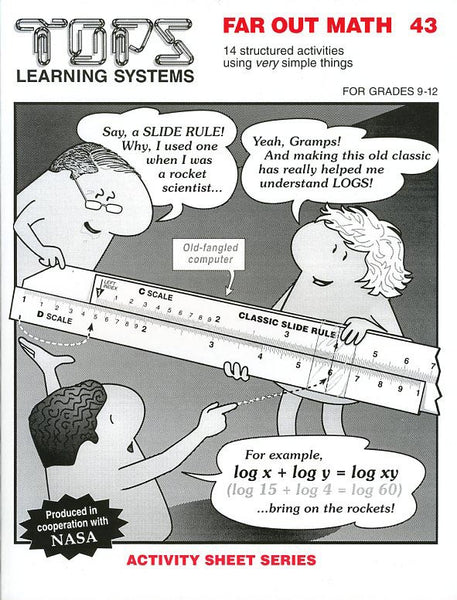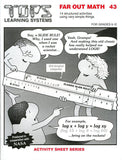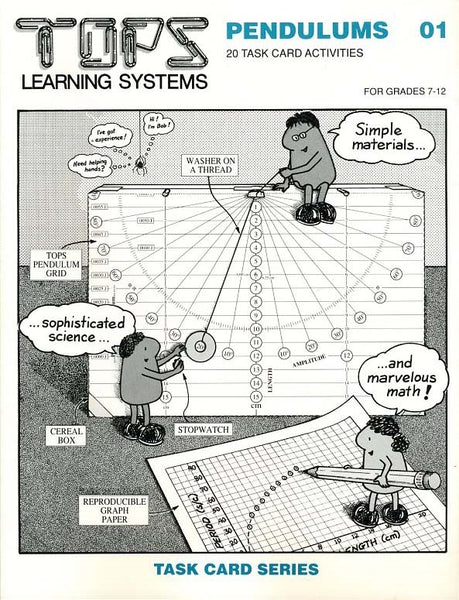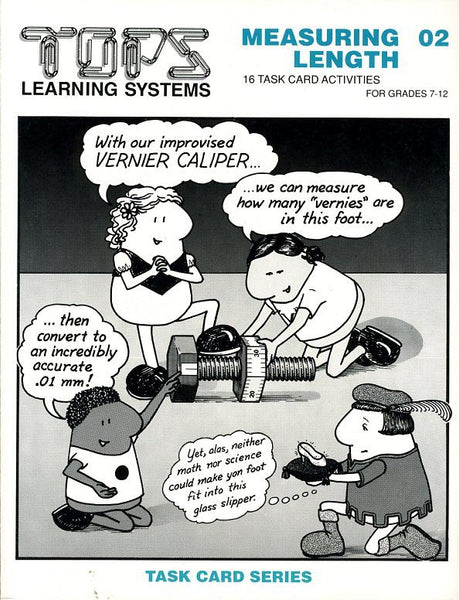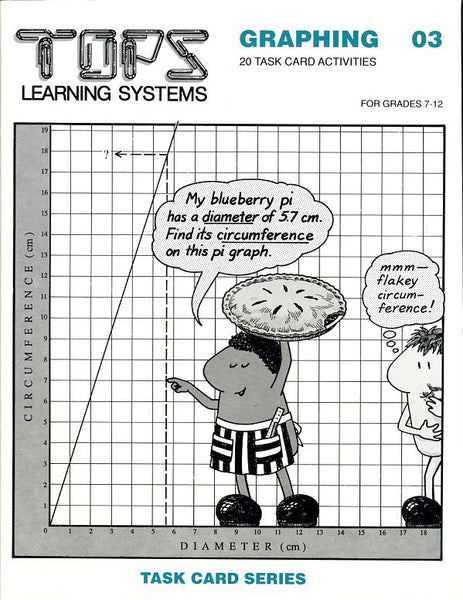#43 Far Out Math (grades 9-12)
Regular price $23.95
Soft-bound, 64 page book, 14 reproducible activity sheets, full teaching notes.
Build a slide rule from two pieces of folded paper and a plastic hairline. See how moving the rulers and hairline relative to each other add and subtract exponential distances which multiply and divide real numbers. Develop a concrete understanding of logarithms, learn scientific notation, compare orders of magnitude, create log graphs and more. This book is produced in partnership with NASA to inform students about the Fermi Gamma-Ray Space Telescope (formerly called GLAST), launched in June 2008.
More Information – click any of the tabs below to learn more about this title
Click here for a complete list of materials and convenient shopping.
You don't need much to make your own slide rules and investigate logarithms. In the list of simple materials list below, plastic freezer bags cut into strips will serve as hairlines.
plastic freezer bags (thinner sandwich bags work less well)
sharp scissors
paper clips
masking tape (or clear tape)
ball-point pens that writes on plastic
copier or notebook paper (or recycled scratch paper)
manila folders
string
calculators
rulers (or straightedges)
meter sticks (optional)
plastic freezer bags (thinner sandwich bags work less well)
sharp scissors
paper clips
masking tape (or clear tape)
ball-point pens that writes on plastic
copier or notebook paper (or recycled scratch paper)
manila folders
string
calculators
rulers (or straightedges)
meter sticks (optional)
- Lesson A1: To construct Adding Slide Rules, scaled with linear calibrations like ordinary rulers. Students will learn to move these scales (and the hairline) relative to each other in ways that add and subtract distance, thus calculating sums and differences.
- Lesson A2: To construct Multiplying Slide Rules scaled in base-10 exponents and use them to calculate products and quotients. Students will come to appreciate that "super numbers" (exponents, orders of magnitude, and logarithms) play by different rules of arithmetic than "ordinary numbers" (numbers, powers of ten, and antilogs).
- Lesson B1: To construct Log Tapes calibrated in base-ten exponents. Students will use these to derive relationships between base-ten logs (exponents) and antilogs (ordinary numbers).
- Lesson B2: To add and subtract log distances on Log Tapes that multiply and divide the corresponding numbers. Students will thereby experience the laws of logarithms in a concrete way.
- Lesson B3: To develop a simplified log table using Log Tape numbers. Students will use these tables by looking up and combining logs, then finding antilogs. Because these problems are extremely simple, students will appreciate the logic of logarithms without getting bogged down in arithmetic detail and error.
- Lesson C1: To construct Base-Two Slide Rules that add and subtract base-2 exponents (log distances), in order to multiply and divide corresponding powers of two. Students will use these slide rulers to generate both log and antilog equations, learning to translate one in terms of the other.
- Lesson C2: To use Base-Two Slide Rules, Log Tapes and calculators to practice "raising" exponents in base notation, and "pulling down" exponents in log notation in different bases. Students will come to appreciate that antilog notation expresses exactly the same idea as raising a base to a power.
- Lesson C3: To solve exponential equations where the unknown is contained in the exponent. Students will learn that taking base-10 or base-2 logs "pulls down the exponent," allowing the unknown to be isolated and solved.
- Lesson D1: To construct Log Rulers, finely calibrated in base-10 exponents and numbers (logs and antilogs). Students practice reading these scales as accurately as possible, listing all certain figures plus one uncertain figure.
- Lesson D2: To convert antilogs to logs, and logs to antilogs, using scientific notation as an intermediate step. Students will thereby develop a look-up table for solving math problems by using logarithms.
- Lesson D3: To construct Classic Slide Rules like those in common use until the mid 1970's. Students will use them like calculators, learning much about reading scales, significant figures, and estimating decimal places.
- Lesson E1: To graph positive numbers as a function of their base-10 logarithms. Students will extend each plotted point to the vertical axis, thereby generating a logarithmic scale that cuts and folds into an improvised slide rule.
- Lesson E2: To graph exponential functions and log functions in base-10 and base-2. Students will discover that exponential and log functions are inversely related, reflecting across the y = x axis as mirror images.
- Lesson E3: To graph second and third order functions. Students will discover an inverse relationship between squares and square roots; between cubes and cube roots. They'll graph these functions on both a linear grid (evenly spaced numbers), and a log-log grid (evenly spaced exponents). Graph lines that curve on linear grids transform into straight lines on log-log grids, with slopes equal to their exponential powers.
Mike Konshak, curator of the International Slide Rule Museum, has a loan program that sends out matching sets of 25 slide rules to teachers wishing to introduce their students to logarithms and slide rules. The only cost to the school is the postage to send them back again. You can keep these for a whole semester or school year. Mike has associates in other countries also hosting this loan program. Check out www.sliderulemuseum.com.
National Science Education Standards (NRC 1996)
Teachers of science...
A: ...plan an inquiry-based science program. (p. 30)
B: ...guide and facilitate learning. (p. 32)
C: ...engage in ongoing assessment of their teaching and of student learning. (p. 37)
D: ...design and manage learning environments that provide students with the time, space, and resources needed for learning science. (p. 43)
• Represent a central event or phenomenon in the natural world.
• Represent a central scientific idea and organizing principle.
• Have rich explanatory power.
• Guide fruitful investigations.
• Apply to situations and contexts common to everyday experiences.
• Can be linked to meaningful learning experiences.
• Are developmentally appropriate for students at the grade level specified.
Core Inquiries: Logarithms • Exponents • Orders of magnitude • Slide rules • Scientific notation • Log graphs • Reading scales • Significant figures • Estimating to the last decimal place
Core Content: Before digital calculators were invented in the 1970's, slide rules ruled for 350 years. Mathematicians and scientists avoided tedious multiplication and long division by adding and subtracting exponents.
TEACHING Standards
These 14 lessons promote excellence in science teaching by these NSES criteria:Teachers of science...
A: ...plan an inquiry-based science program. (p. 30)
B: ...guide and facilitate learning. (p. 32)
C: ...engage in ongoing assessment of their teaching and of student learning. (p. 37)
D: ...design and manage learning environments that provide students with the time, space, and resources needed for learning science. (p. 43)
CONTENT Standards
These 14 lessons contain fundamental content as defined by these NSES guidelines (p. 109).• Represent a central event or phenomenon in the natural world.
• Represent a central scientific idea and organizing principle.
• Have rich explanatory power.
• Guide fruitful investigations.
• Apply to situations and contexts common to everyday experiences.
• Can be linked to meaningful learning experiences.
• Are developmentally appropriate for students at the grade level specified.
Unifying Concepts and Processes
NSES Framework: Systems, order, and organization • Evidence, models and explanation • Constancy, change, and measurement • Form and function
Core Concepts/Processes: Slide rules multiply by adding exponents, and divide by subtracting exponents. • Exponents, orders of magnitude, and logarithms have similar mathematical properties. • Ordinary numbers, powers of ten, and antilogs have similar mathematical properties.
Science as Inquiry (content standard A)
NSES Framework: Use appropriate tools and techniques to gather, analyze, and interpret data. • Think critically and logically to connect evidence and explanations. • Communicate scientific procedures and explanations. • Use mathematics in all aspects of scientific inquiry.Core Inquiries: Logarithms • Exponents • Orders of magnitude • Slide rules • Scientific notation • Log graphs • Reading scales • Significant figures • Estimating to the last decimal place
History and Nature of Science (content standard G)
NSES Framework: Science as a human endeavor • History of scienceCore Content: Before digital calculators were invented in the 1970's, slide rules ruled for 350 years. Mathematicians and scientists avoided tedious multiplication and long division by adding and subtracting exponents.

